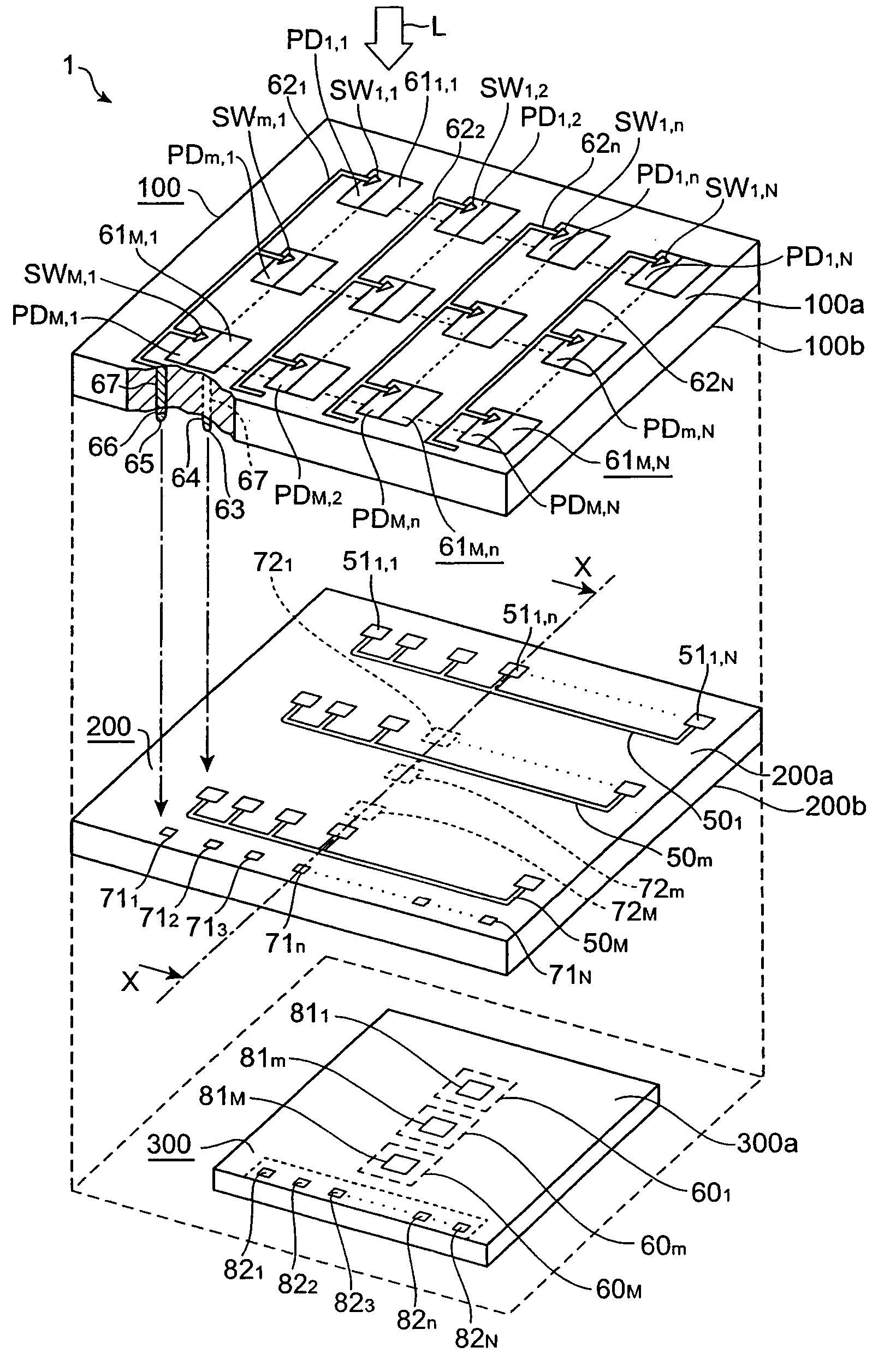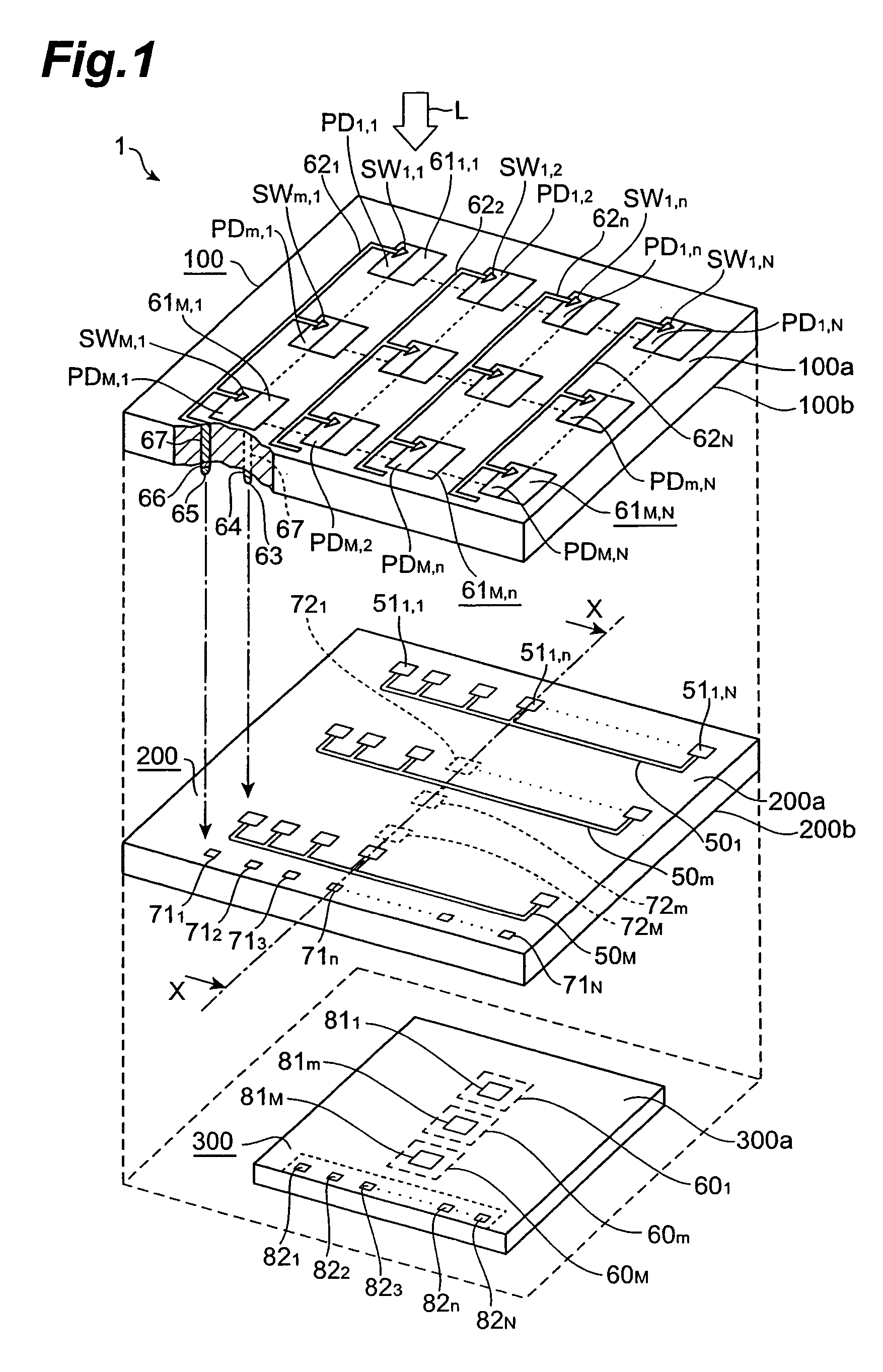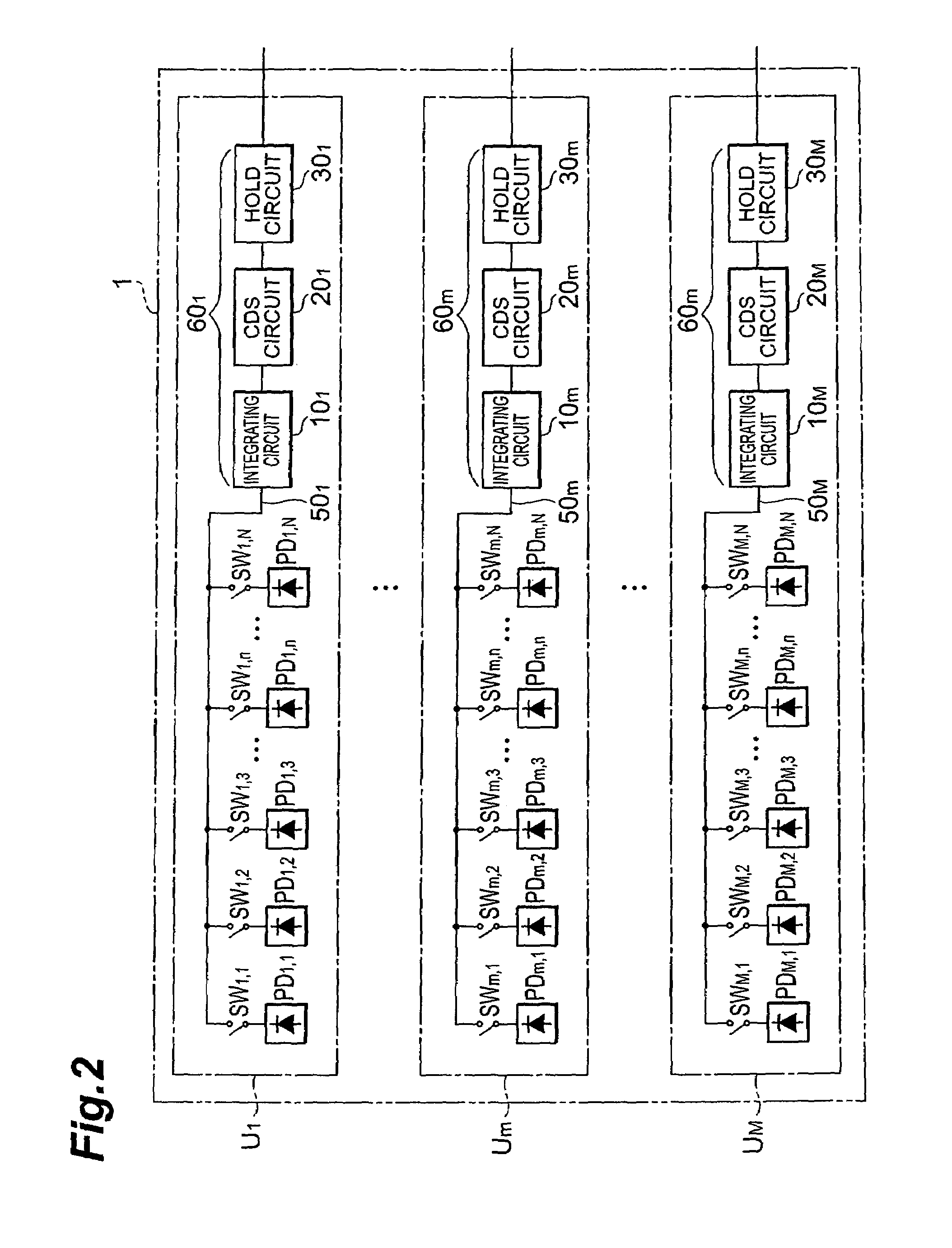Photo-detection device
a detection device and photo-detection technology, applied in the direction of radiation controlled devices, optical radiation measurement, semiconductor/solid-state device details, etc., can solve the problems of path exhibiting a large parasitic capacitance and failing to detect light accurately
- Summary
- Abstract
- Description
- Claims
- Application Information
AI Technical Summary
Benefits of technology
Problems solved by technology
Method used
Image
Examples
Embodiment Construction
[0027]In the following, embodiments of the photo-detecting apparatus according to the present invention will be explained in detail. with reference to FIGS. 1 to 12. In the explanation of the drawings, constituents identical to each other will be referred to with numerals identical to each other without repeating their overlapping descriptions.
[0028]To begin with, an embodiment of the photo-detecting apparatus according to the present invention will be explained with reference to FIGS. 2 to 4. FIG. 2 is a view showing the configuration of an embodiment of the photo-detecting apparatus according to the present invention. The photo-detecting apparatus 1 shown in FIG. 2 comprises M photo-detecting units (hereinafter referred to as units) U1 to UM. Each unit Um includes N photodiodes PDm,1 to PDm,N, N switches SWm,1 to SWm,N, and a signal processing circuit 60m. Here, M is an integer of at least 1, whereas N is an integer of at least 2. On the other hand, m is an integer of at least 1 b...
PUM
 Login to View More
Login to View More Abstract
Description
Claims
Application Information
 Login to View More
Login to View More - R&D
- Intellectual Property
- Life Sciences
- Materials
- Tech Scout
- Unparalleled Data Quality
- Higher Quality Content
- 60% Fewer Hallucinations
Browse by: Latest US Patents, China's latest patents, Technical Efficacy Thesaurus, Application Domain, Technology Topic, Popular Technical Reports.
© 2025 PatSnap. All rights reserved.Legal|Privacy policy|Modern Slavery Act Transparency Statement|Sitemap|About US| Contact US: help@patsnap.com



